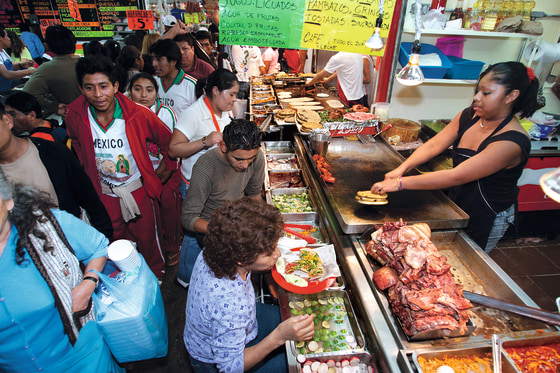NEW YORK, NY -- If you want to know what it's like to hear the sing song of vendors in the open air markets or tianguis in Mexico City's Colonia Roma or walk along the Centro Histórico's sidewalk food stands, open the pages of Eat Mexico: Recipes from Mexico City’s Streets, Markets & Fondas (Kyle Books) by Lesley Téllez. In her first cookbook, the California born-and-raised blogger and cultural observer takes us with her on a wonderful culinary tour of the city. We linger over the comida corrida at a neighborhood fonda and look at the street scenes and buzzing markets beautifully captured by award-winning photographer Penny de los Santos.
Téllez is no stranger to chronicling life in Mexico. If you’ve ever wondered what it would be like to leave behind everything that is familiar and comfortable and immerse yourself completely in the culture, life and, language of another country, you might want to spend some time reading Téllez's The Mija Chronicles. Part travelogue, part food blog, part wish-fulfillment, Téllez blogged about doing exactly that when she and her husband moved to Mexico City in 2009.
Born and raised in a Mexican-American family in southern California, Téllez was continually surprised by the discoveries she made as she explored the city she’d been set on living in even before she’d visited. Immediately drawn to the markets, fondas and food stalls, she eventually launched Eat Mexico, a culinary tour company that specializes in gastronomic tours of Mexico City and Puebla while completing a diploma program at the Escuela de Gastronomía Mexicana.
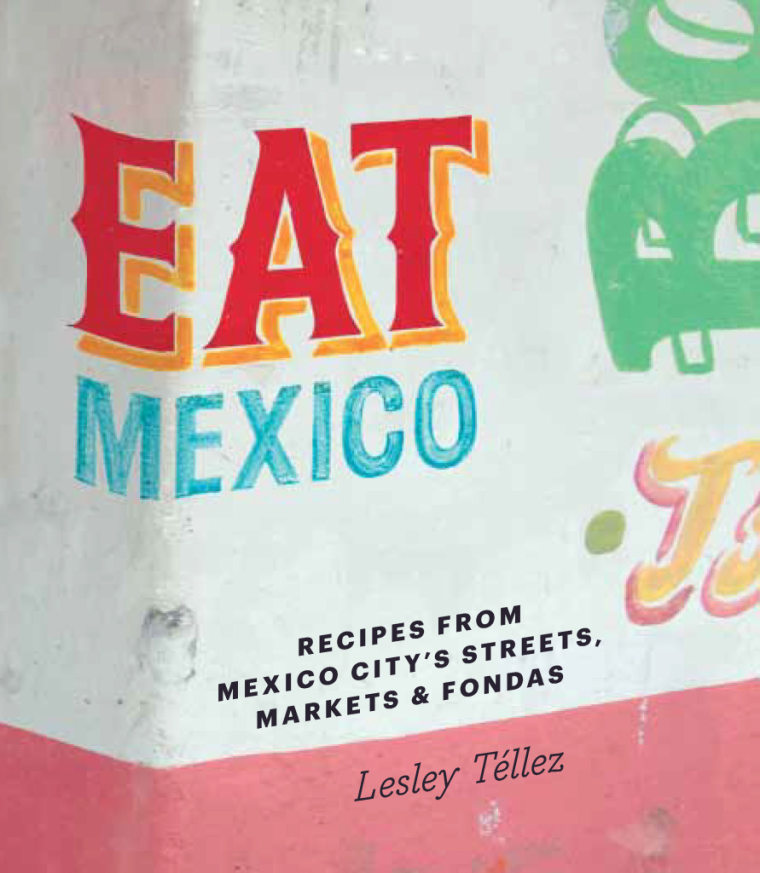
Now settled in New York, we met up with Téllez at a food truck in Elmhurst, Queens in New York City to discuss her book over tortas and agua frescas. It was her suggestion and, when someone is this good at finding things worth doing, eating, and seeing, you know to follow their lead.
NBC: In 2009, you were working as a journalist at the Dallas Morning News when you and your husband made the move to Mexico City. What prompted it and how long did you plan on staying?
LT: He got a job as a reporter covering Carlos Slim’s companies. I ended up around the same time taking a buyout [from the newspaper]. Looking back now, I remembered thinking it would be like 1 or 2 years. I didn’t have a job and didn’t know what I was going to do with my time. I figured Creighton would be down there a couple of years and we’d figure it out.

NBC: Markets in Mexico City are a beehive of activity and it can be intimidating to interrupt the flow. How did you approach vendors and how long did it take you to acclimate?
LT: People are super nice. I always found people to be extremely approachable. Across the board and not just in markets. Even when I had to go get the cable turned on, had to go get our cell phones fixed, and didn’t know what I was saying. I would tell people, “I’m sorry, I’m a foreigner.” They’d say, ‘no te preocupes,’ like ‘it’s cool.’ People at the markets were great, and they want to sell their products.
NBC: At what point did it feel like you’d finally clicked into your new surroundings?
LT: In terms of the food, it was when I was in cooking school [at the Escuela de Gastronomía Mexicana] and we made mole for the first time. I realized it wasn’t the crazy, complex, impossible thing that I thought it was. I realized it was pretty much a way to express the flavors, chiles, and combination of spices that you like. It can change. It can be anything you want it to be. I had never thought about it like that before.
NBC: When did you launch culinary tour company Eat Mexico and how did it come about?
LT: I feel like the universe just conspires to put you on your path. I met [co-founder] Jessica Lopez through the one friend I had when I moved to Mexico City. She was one of my sources and ran a tourism company in Mexico City that mixed gastronomy with culture - museums, panaderias, tequila, churches - a mix of those kinds of things. I did her tours and thought they were great. One day we were talking and thought it would be cool to do food tours. I was a journalist. What did I know about being a tour guide? But I had time and she was a good friend of mine. I thought we’d go drink wine and launch a business on a napkin. That’s pretty much what we did. That was in July 2010 so this year the business will be five years old.
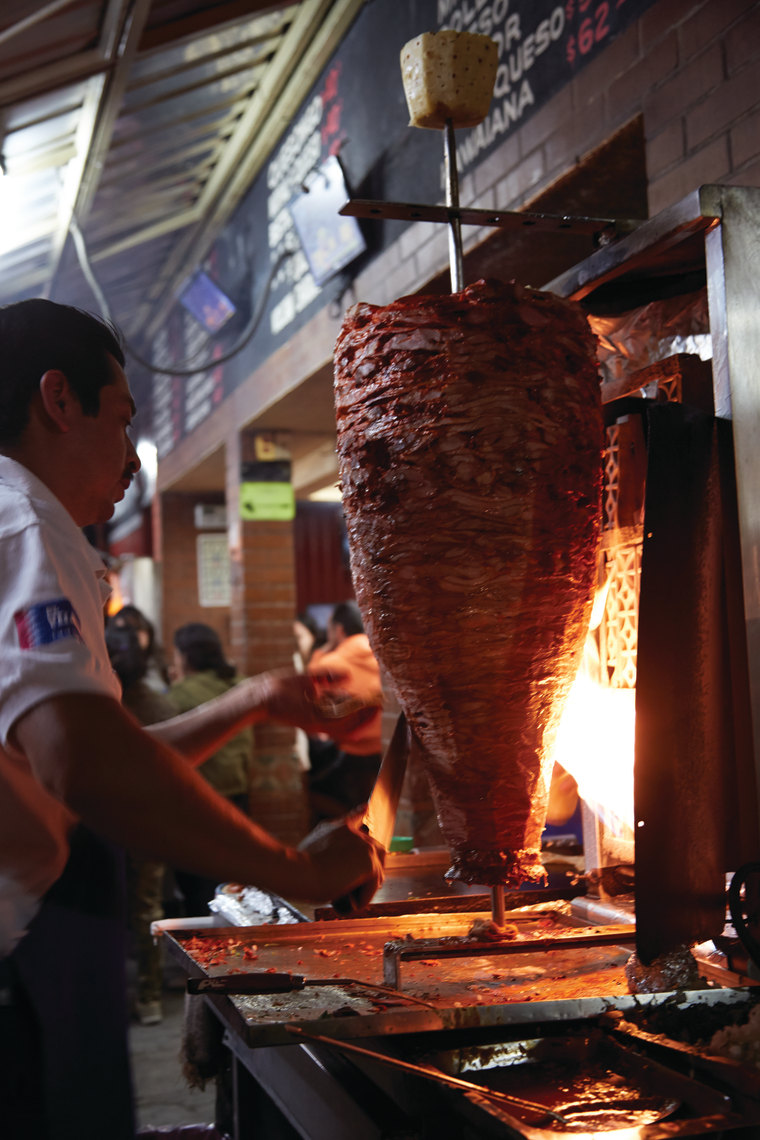
NBC:There’s a lovely progression in the book where you start with street food then explore the markets, fondas, countryside, and home cooking in turn. With each chapter, you’re seeing a more private, intimate world. Did this parallel your own experience as you came to understand the city?
LT: Well it’s funny. I think I felt a really strong connection to Mexico City right away even before we were living there. So in terms of me feeling, and this sounds corny, like it was my spiritual home in a sense and feeling such a strong internal connection, that was already there. On a daily basis, I would say I cannot believe I live here, I love this place, and I’m so glad I moved here. Granted, there were awful things like the bureaucracy and the traffic. And things that I’d learned later like that the judicial system was terrible... You reach a point where the honeymoon phase ends, and you have to accept the city in all of its awfulness and all of its greatness and we did. I feel like in Mexico City, so much of it can be so awful but you get through it and there’s so much of it that’s so great. It’s the coexisting of both of them together that makes it work. It’s like a drug. You just want to wake up and do it all over again.
NBC: The book explores regional Mexican food as it’s done in the capital. What recipes are singularly of the DF?
LT: It’s a meeting place, agriculturally speaking, for food trucks arriving every single day with produce from all over the country. There’s a really strong focus on corn, beans, and chile like there has been forever. That’s still there. I think that you see more about corn, beans, and chile and squash and tomatoes in Mexico City than you see in places like Baja California for instance or in Tijuana.
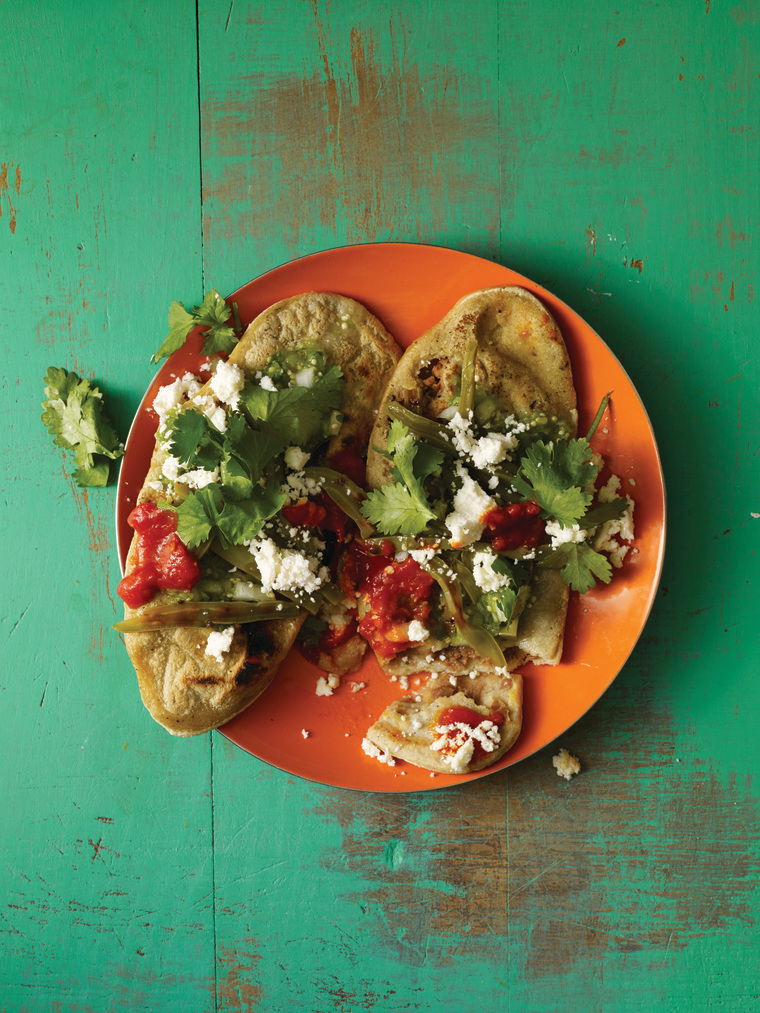
NBC: You do a wonderful job of presenting tricks and techniques for working with Mexican ingredients without compromising the integrity of the recipe. Where did you pick these up?
LT: I think most of it was from my own trial and error. In Mexico, the ingredients are pretty awesome. I'm so glad that I tested it and wrote it in the US because the quality can vary so much that I think you have to know those things if you're going to be making it at home. In Mexico, why would anyone use canned huitlacoche when you can just go get it in the market. You’d know the different between a tomatillo and a regular tomate verde and you would never really buy flavorless tomatillos because no existe- it doesn’t exist.
NBC: Has living in Mexico changed the way you enjoyed the California-Mexican food you grew up with? Was there anything you missed about it or that Cal-Mex cuisine does better?
LT: I missed queso. I would have conversations with my Mexican friends about it. It’s not queso fundido, it’s more processed. They would say it sounds gross and I would say no, it’s, “sooo good.”
I missed homemade flour tortillas. We can’t find really nice, fresh, thick homemade flour tortillas in Mexico City. What I miss [now living in NY] are those same Mexican restaurants of the 1960s and 70s that you find in California. They’ve had decades to perfect their enchilada plates, and their refried beans are a lagoon of pureed beans, and the red rice comes in the same plate with a little black olive on top, and the thick ceramic plates are always super hot when they come to the table. That’s what I miss.
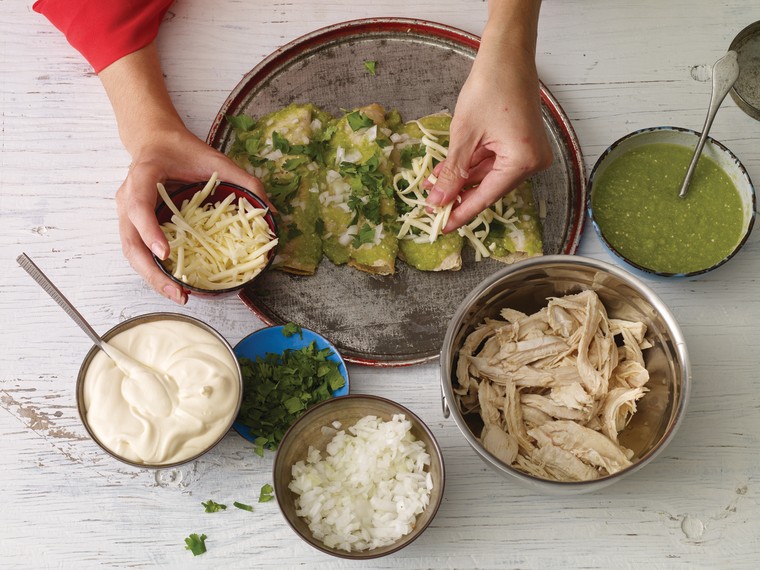
NBC: Now that people in the U.S. are more aware of what the food from Mexico is really like, do you feel it has changed how Mexican-American food is viewed?
A: It's so funny because I feel like for some reason people seem to think that if you love and appreciate interior Mexican food that means you should hate what Mexican food has evolved into in the United States. I think that’s totally wrong. The type of Mexican food that is served and that is regional depending on where you are is perfectly valid. It’s good. A lot of it is really good.
If it’s bad food then it’s bad food. But there’s something really valuable about those salty, see-through corn tortilla chips and the salsa that’s heated or not heated depending on where you are in the US, and the cheese-drenched enchiladas. It’s delicious. And the queso, for God's sake! I don’t think we have to hate those things in order to show how hardcore we are about Mexican food.
NBC: You’ve just become a new mother. What recipe are you most excited to introduce to your son when he’s older?
LT: Honestly, what I would like to do is to make for him what my mom made for me. For him to have the same memories I had - which was the sound of the tomato sauce being poured into the fried pot of rice, that sizzle that, growing up and hearing, I associated with food.
I would love to make him the same migas that my mom made for us when we were little, which was just fried corn tortillas which she tore and up and cracked a few eggs and scrambled them with salt and that was it. Beyond that I’m super excited to get his hands in masa. I want him to know that cooking can be fun. I don’t have any grand notions about teaching him how to make moles and tamales. I’d start with the basics. I want him to grow up knowing what good food tastes like and at least have good food memories about the things I prepared for him.
